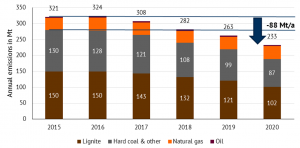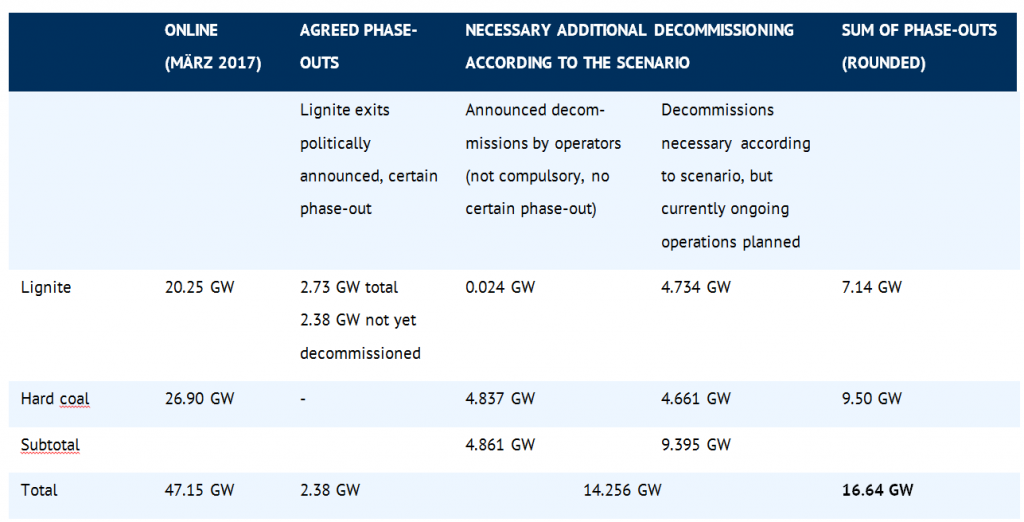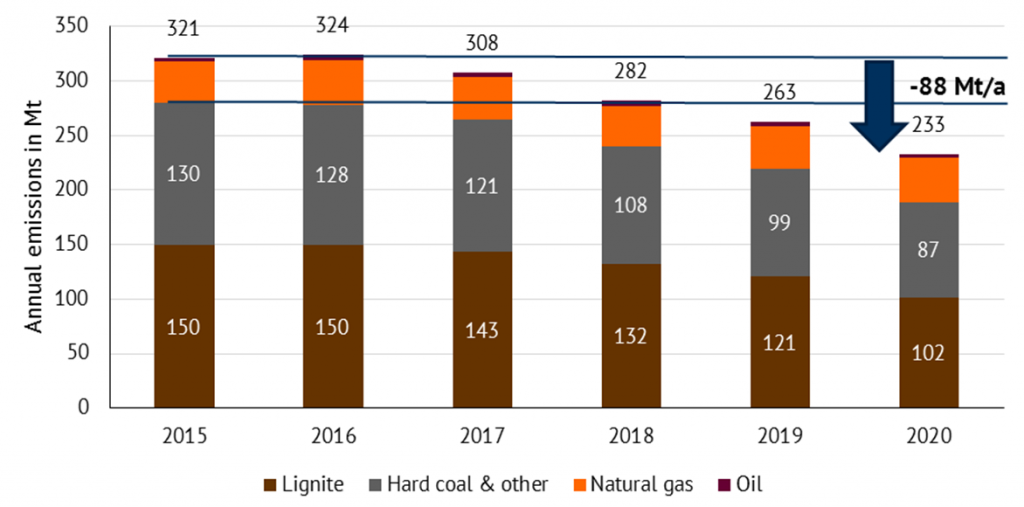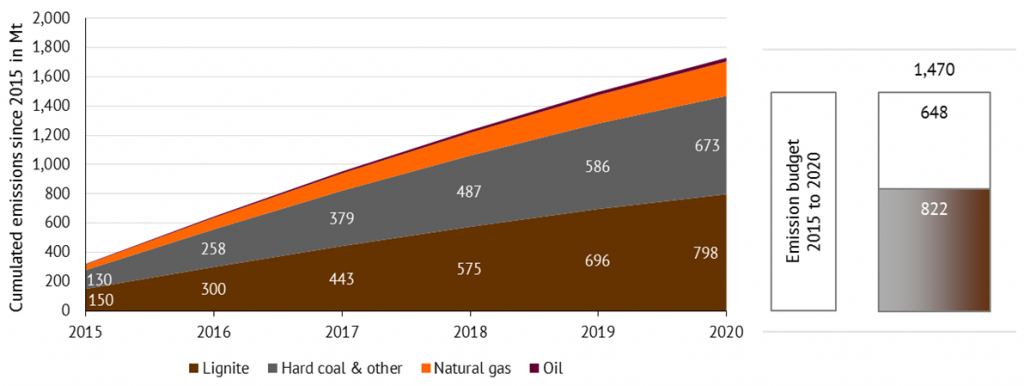In a short study Energy Brainpool has evaluated the decommissioning of coal capacities on behalf of Greenpeace e.V. In order to achieve the 2020 climate targets, additional brown and hard coal capacities will have to be decommissioned. Read in this article how these shutdowns affect the security of supply and possible emission and electricity quotas for coal-fired power plants.

The short study assesses a coal exit path, according to which coal power plants with a generating capacity of 16,64 GW will leave the electricity market by 2020. The analysis is based on the study “Climate protection through coal phase-out”, which Energy Brainpool written in 2017 on behalf of Greenpeace.
The German climate target specifies emissions of 750 million tones (Mt) of CO2 for 2020. In relation to 1990, this represents a decrease of 40 percent. According to an internal document issued on 4th of October 2017, The Federal Ministry for the Environment, Nature Conservation, Building and Nuclear Safety calculates that the continuation with current measures would fall short of the emission reduction target by 104 to 94 Mt and only achieve a reduction of 31,7 to 32,5 percent. This development makes clear that a failure on delivering on the climate target can only be prevented by additional climate protection measures. A possible measure with a significant short-term potential for reducing emissions is to shut down coal-fired power plants.
At the present time, a decommissioning of 4.86 GW is already being considered by power plant operators due to a lack of profitability. Table 1 represents the current capacities, already announced phase-outs due to political decisions as well as shutdowns of coal capacities according to the scenario of the study.

Table 1: Current capacities, announced and still necessary phase-outs according to the scenario of coal-fired power plants until 2020. (Source: Bundesnetzagentur 2017)
The phase-out of 14.26 GW (+2.38 GW political lignite phase-outs) coal capacity comes without supply bottleneck due to European overcapacities until 2020. Even with decommissioning of 14.26 GW in addition to already established safety readiness for lignite power plants (Table 1) a significant positive capacity balance of just under 4 GW available. The capacity balance calculates how much power is available for demand coverage in extreme cases. However, increasing flexibility and new controllable generation capacity will be needed in the following decade.
As figure 1 illustrates, a coal phase-out achieves a gradual reduction in annual emissions according to our model. Hereby, the emissions from the electricity generation from of lignite, hard coal, natural gas and oil can be reduced by 88 Mt/a by 2020 compared to 2015. The emission reductions of around 6-16 Mt have to be achieved in other sectors to reach the 2020 climate target.

Figure 1: Annual CO2 emissions (up to 2020) from lignite, coal, natural gas and oil production as a result of electricity market modeling in a coal-mining exit by 2030 (source: Energy Brainpool)
The modeling results in an allowable cumulative CO2-emission of 1470 Mt from brown coal and hard coal power plants from the year 2015 until the target year 2020. According to current status-quo and modeling by the 1st of January 2018, 822 Mt or 56 percent of these emissions will already be emitted. In order to stay within the modeled emission quota of 1470 Mt, the emission of the remaining 648 Mt of CO2 is still possible for the period from 2018 to 2020 (see figure 2).

Figure 2: Cumulative CO2 emissions (up to 2020) from lignite, coal, natural gas and oil from electricity generation as a result of electricity market modeling in a coal-mining exit by 2030 (source: Energy Brainpool)
Different periods of time can now be juxtaposed using the modeled emission quotas for coal. The residual amount of electricity, which complies with the model coal phase-out amounts to 668 TWh for the period from 2018 to 2020. This corresponds to an annual decline in gross electricity generation from coal-fired power plants of 14.85 percent. Accordingly, in the period from 2021 to 2030, only 903 Mt of CO2 emissions and 987 TWh of residual electricity are available for coal-fired power plants.



